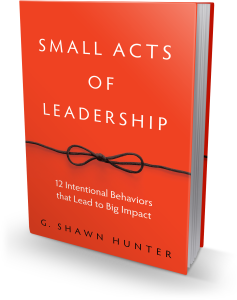You Adore Quality. So Why Consume Garbage Media?
We revere quality. From artisanal beers and small batch kombucha to bespoke boots and $200 Diesel jeans, the world seems obsessed with quality. But if we are willing to carefully shop for only the very best cars, organic food, and hand-crafted clothes, why are we willing to consume low-quality news and information? Why do we fill our brains with crap?
We thoughtfully admire and compare the quality of our shoes, our merino sweaters, our WarbyParker glasses, and yet gleefully scroll through the mindless waterfall of Twitter or Facebook. Most of it is crap. Most of it is designed to hijack your attention, not inform or educate. Truth is, most often the product is you.
Media noise is echoing around us constantly. And while some of the stories are real, much of the interpretation is fiction. So while it is true that over 4000 Ukrainian soldiers died in 2019 fighting to maintain the legitimacy of their country, what that means to Russia or the rest of the world is the subject of much debate, spin and opinion.
Have you kept track of the movies you have watched, books and newspapers you have read, or music you have listened to over the years? Probably not, yet all of that media has shaped the way you think about love, death, joy, kindness, mourning, and more. Your interpretation of relationships and the world is the culmination of years of ingesting information. The phrase “garbage in, garbage out” in computer science is a reference to the fact that if you put garbage data into the equation, you get garbage results. The same is true in your head.
It has always been true that change is the only constant, yet the pace of change continues to accelerate. Which means our own adaptation and growth is a necessary part of recreating ourselves for tomorrow. If someone describes the future to you and it doesn’t sound like fantasy or science fiction, it probably isn’t realistic. That’s how fast things are changing. It you’re not confused, you’re not paying attention.
Big data is fueling artificial intelligence at such an astonishing rate that your technical skills will likely no longer be relevant soon. Especially since AI will learn to code better and faster than a human. I was at a conference recently and maintained a continuously flowing conversation with a Chinese speaking participant by using a real-time language translation app. We never spoke in each other’s native language, yet maintained a clear conversation. It was both amazing and a little disconcerting.
According to the Society for Human Resource Management, the most important soft skills needed now and in the foreseeable future are problem solving, innovation, creativity, dealing with ambiguity, and the ability to effectively communicate your ideas to others.
And how will you generate powerful new ideas, learn how to effectively problem-solve, and communicate your ideas with others, unless you consume powerful new ideas and information? My recommendation is step into the Slow Media Movement. Similar to the slow food movement, but for your brain.
- For starting your slow media journey try a media detox with Cal Newport’s Digital Minimalism.
- For personal change and research data on the power of gratitude and compassion, I recommend David DeSteno, Emotional Success.
- For organizational change and fun stories on high performing teams, read Daniel Coyle, The Culture Code.
- For innovation and seeing the world through fresh eyes check out Stephen Shapiro’s new book, Invisible Solutions
- For stories of radical breakthrough I recommend Safi Bacall, Loonshots.
- And finally, I have been greatly enjoying Jill Lepore’s engrossing book on American History, These Truths.
Speaking of building an intentionally-designed life, check out Mindscaling’s new series on Civility in the Workplace.
- ____________________________________________________

In other news, our son and I bicycled across America with two other dads and their teenagers. We published a new book about it called Chasing Dawn. I co-authored the book with my cycling companion, the artist, photographer, and wonderful human jon holloway. Buy a copy. I’ll sign it and send it to your doorstep.

 Our company
Our company